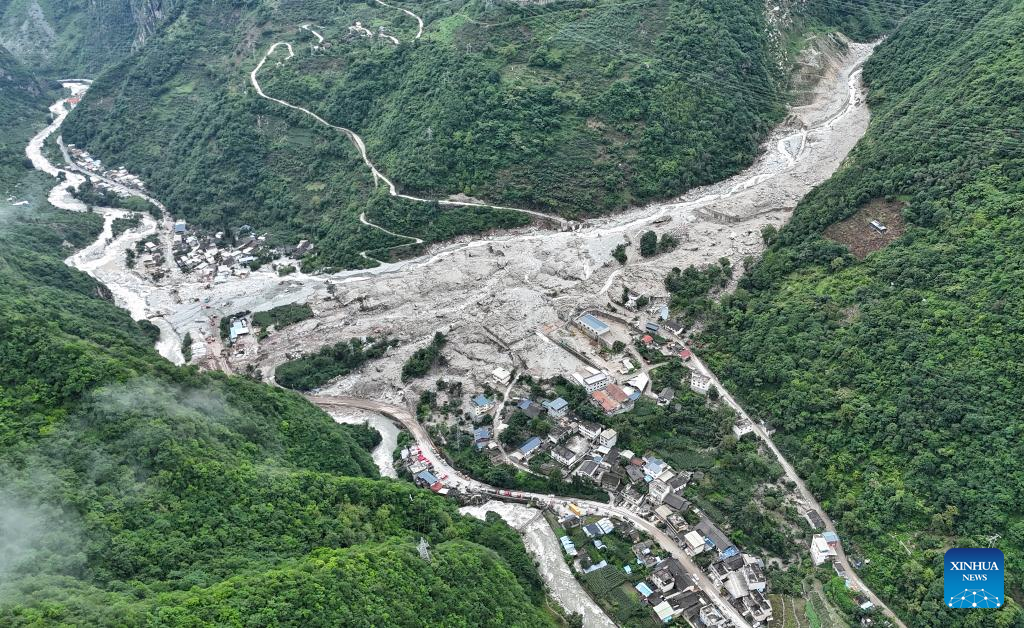27 people were killed by a massive channelised debris flow in China last year.
On 3 August 2024, a large debris flow occurred in the Ridi valley, Kangding, Sichuan Province, China. This event is described in a paper (Cheng et al. 2025) just published in the journal Landslides. Whilst the paper itself is behind a paywall, this link should provide access to it.
This event is a really good example of a phenomenon that keeps cropping up, namely multiple shallow landslides that transition into a highly destructive channelised debris flow, generated by extremely intense rainfall. The value of the Ridi valley example is that Cheng et al.(2025) have forensically investigated this particular event.
The outlet of the Ridi valley is located at [30.069422, 102.105085]. This is a Google Earth image of the site from September 2022:-

This is quite remarkable terrain – the linear distance from the top of the catchment to the main channel is about 9.5 km, but the elevation difference is over 4,000 metres. Thus, the catchment is exceptionally steep. Debris flows have been recorded in the Ridi valley in 1952, 1963, 1966, and 1982. Note the large fan at the junction with the maion channel, which is populated and is crossed by a key road (China National Expressway G4218).
I have downloaded a Planet Labs image of the site from 1 August 2024 and draped it onto the Google Earth DEM:-

And here is a Planet Labs image from 5 August of the site, showing the aftermath of the landslides and debris flow:-

And here is an image compare:-


The Planet Labs images show multiple shallow landslides in the catchment and also the track of the debris flow. Cheng et al.( 2025) have mapped 28 shallow landslides and four rock slope collapses in the catchment. These had a total volume of about 12,000 cubic metres. It is fascinating to note that the local rain gauges did not record any substantial rainfall at the time of the event, suggesting that the trigger was a highly localised rainstorm.
The initial 12,000 m3 of landslide material combined to form a debris flow that eroded a further 31,000 m3 from the slopes below, and 337,000 m3 from the channel to form a debris flow with a total volume of 380,000 m3. Thus, the initial slope failures constituted just 3.2% of the total debris flow volume. This is the epitome of a cascading event.
Cheng et al.( 2025) do not document the detailed impact of the 2024 Ridi valley debris flow, saying just that “the disaster had severe impacts on local residents and infrastructure.” The Planet Labs image suggests that this might have been very severe:-

A news report at the time indicated that up to 27 people were killed. Xinhua published this image of the impact on Ridi:-

Reference
Cheng, Q., Liu, T., Lei, H. et al. 2025. Investigation of a shallow high-locality landslide-induced debris flow in an alpine valley: A case study of the Ridi debris flow, Kangding, Sichuan Province, China (August 3, 2024). Landslides. https://doi.org/10.1007/s10346-025-02559-y
Planet Team, 2025. Planet Application Program Interface: In Space for Life on Earth. San Francisco, CA. https://www.planet.com/

